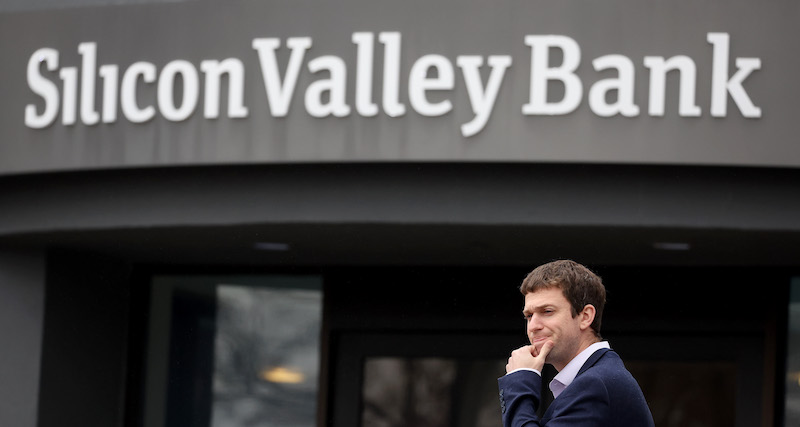After the bankruptcy of US bank Silicon Valley Bank (SVB), the largest bank failure since 2008 in the United States, the US government on Sunday closed another bank, Signature Bank, to try to avoid further problems for the banking system and to prevent what in the jargon is defined as a “contagion”, i.e. that the difficulties of one bank extend to others. The government has also announced that it will guarantee all SVB and Signature account holders and that it will set up new systems to help banks in difficulty.
Signature Bank, a New York bank that is very active in the real estate sector, was closed on Sunday by the Federal Deposit Insurance Corporation (FDIC, the US government company that deals with the solvency of the banking system) because it was considered the one most at risk of fail, as SVB had just done. Following SVB’s bankruptcy on Friday, Signature account holders also began withdrawing money en masse from their accounts. The government had begun to fear that even if Signature went bankrupt as SVB had just happened, the bankruptcy of two regional banks (i.e. not large but important for their territory) could have caused a chain reaction which would have embarrassed the entire American banking system.
As a result, the government instructed the FDIC to shut down Signature, effectively taking control of the bank.
The US government then announced two important measures to boost confidence in the banking system, one associated with recent bankruptcies and one more general. First, he announced that all SVB and Signature account holders will get their money back. In the United States, deposits up to $250,000 are guaranteed by law; almost all of the deposits in SVB, which was the most important bank in Silicon Valley and which therefore had many customers among entrepreneurs and workers in the technology sector, was however above this sum and risked being lost.
To allay the concerns of many current account holders, the government has said it will also guarantee current accounts over $250,000, making one exception. It will do so without using taxpayer money, because it will tap into the FDIC’s Deposit Insurance Fund, which is paid for by all US banks. The government’s intervention, therefore, will not formally be a rescue of the two banks: on the contrary, the government has made it known that people who have invested in SVB, unlike current account holders, will lose all their money, as happens to those who normally invest in a company that then goes bankrupt.
The government then announced new measures to increase the safety of the banking system, including a new loan mechanism for troubled banks managed by the Federal Reserve, the US central bank.
SVB was founded in 1983 in Santa Clara, California, and in a short time it had become one of the leading banks in Silicon Valley, where IT companies were beginning to concentrate. In 2021, the bank managed about half of all funds used to finance startups: it had grown rapidly and had attracted numerous investors, interested in having a bank specialized in investments in the technology sector.
– Read also: Silicon Valley startups in trouble
Overall, the SVB used the money deposited by its customers to invest it in bonds, a strategy quite common among banks, and which had paid well until last year when inflation started to increase. The US central bank (the Federal Reserve) had intervened by raising interest rates, depreciating the value of investments that the SVB had already made at lower rates. To these difficulties were then added those specific to the American technology sector, to which SVB was particularly exposed.
On March 8, SVB Financial Group, one of the branches of the bank, had announced the sale of securities for 21 billion dollars, expecting a loss of about 2 billion dollars. The bank hoped to restore its balance sheets in this way, but the announcement of the losses had greatly frightened customers and investors, causing a large wave of withdrawals by account holders.
In a short time the bank, which was all in all still solid, went bankrupt because most of its customers, frightened by rumors of possible collapses, had started withdrawing their money from current accounts, creating a chain reaction.
SVB was not a particularly large bank: it had assets (ie total assets, simplifying a lot) of about 200 billion dollars, which is not much if we consider that the entire American banking system is worth 23 trillion dollars. But it was still feared that there would be a contagion throughout the system, because account holders, frightened by the very rapid collapse of SVB, could also start withdrawing their money from other banks considered fragile: this was what was happening with Signature Bank , and for this reason the government has decided to intervene, closing Signature and announcing measures to guarantee current account holders and, perhaps, appease concerns.
